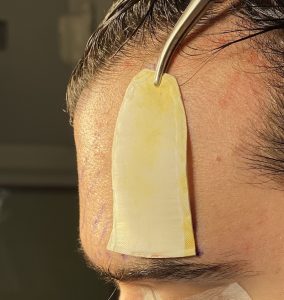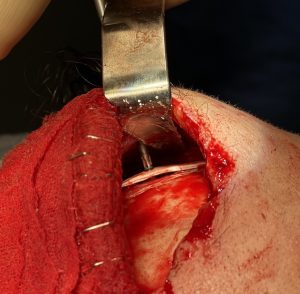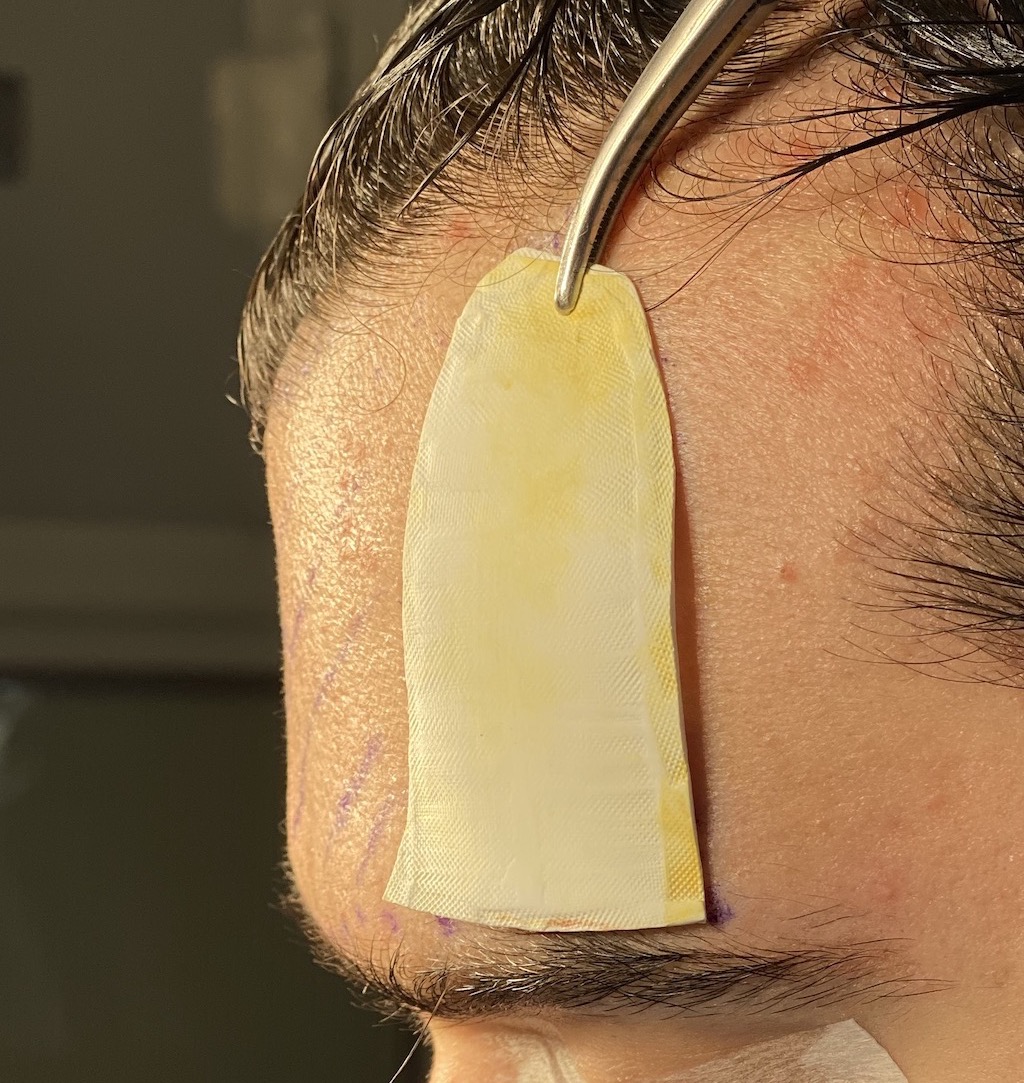Background: Forehead asymmetry can either consist of an excess or a deficiency on one side. While most commonly seen in congenital plagiocephaly a twist of the forehead for whatever reason during development makes one side different from the other. Forehead asymmetries often affect the entire side of the forehead most prominently along the bony temporal line which may or may not involve the brow bone. As the bony temporal line represents the side of the forehead before it turns into the temporal region on the side of the head this may be the most noticeable part of the forehead asymmetry.
The techniques to treat forehead asymmetry are either to reduce the bulging or more forward side by a bone burring method or to augment the smaller side through an implant overlay. Depending upon the size and projected thickness of the forehead deficiency a variety of implant options are available. Larger surface area or thickness deficiencies after best treated by a custom forehead implant approach. Smaller size and thickness defects can be treated by a sheet implant approach specifically an ePTFE (more commonly known as Goretex) material. It offers ease of intraoperative fabrication and its microfibullar surface porosity promotes soft tissue adhesion to it.
Case Study: This young male was to undergo a central forehead reduction for mild frontal bossing and he also desired to augment a modest (a few millimeter) deficiency along the left forehead/temporal line area.



Case Highlights:
1) Forehead asymmetry can be addressed by either bone reduction on the larger side or bone augmentation on the smaller side.
2) Small amounts of forehead asymmetry due to a deficiency on one side can be done by ePTFE sheets, hand cut in surgery to the size of the defect.
3) Placement of an ePTFE sheet for a left temporal line deficiency was done through a hairline approach used for a central forehead reduction with percutaneous screw fixation.
Dr. Barry Eppley
Indianapolis, Indiana






